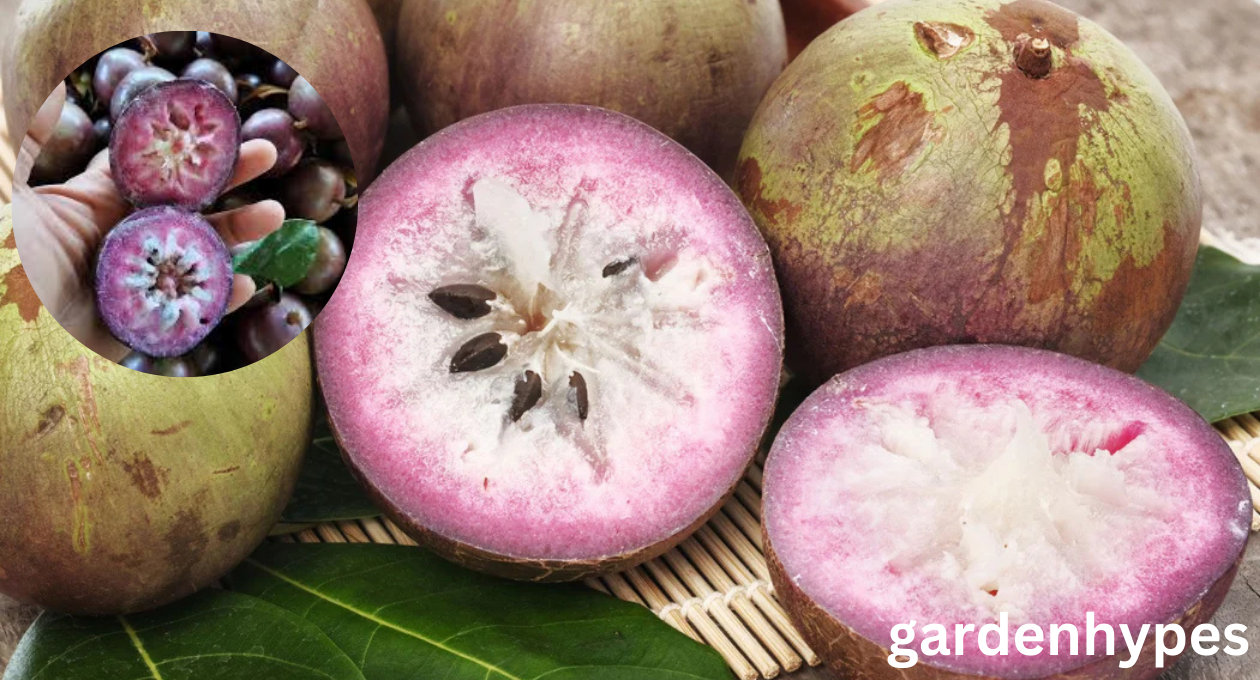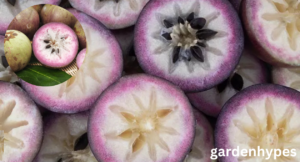Caimito Calories Nutritional Facts and Health Benefits in Every Bite
Introduction to Caimito and Its Nutritional Profile
Let’s talk about a fruit that doesn’t get enough spotlight—caimito calories, also known as Star Apple. This tropical beauty is sweet, creamy, and loaded with health benefits. If you’re counting calories or just curious about what goes into this lesser-known fruit, you’re in the right place.
click in link marang fruit
What is Caimito (Star Apple)?
Caimito is a tropical fruit native to the Caribbean and parts of Central America. It has a shiny purple or green skin, a star-shaped pattern when sliced, and a jelly-like pulp that’s incredibly refreshing. It’s mostly eaten raw, but it can also be added to smoothies and desserts.
The Growing Popularity of Exotic Fruits in Diets
In today’s health-conscious world, people are moving beyond apples and bananas. Caimito is gaining popularity for its exotic appeal and nutritional punch. So let’s explore just how healthy (and diet-friendly) this fruit really is.
Caimito Calories – The Breakdown
Alright, let’s get to the number you came for—calories.
How Many Calories Are in a Caimito?
On average, 100 grams of caimito contains around 67–75 calories. It’s a relatively low-calorie fruit, especially considering its sweetness.
Caloric Value Based on Portion Size
Calories in 100g of Caimito
One of the most common ways to measure fruit intake is by 100 grams. For caimito, this provides about:
- 67–75 calories
- 1g protein
- 17g carbs
- 0.3g fat
Calories in One Whole Fruit
A whole caimito fruit weighs approximately 150–200g, which means:
- Calories per fruit: 100–140 kcal
Not too shabby, right?
Comparison with Other Fruits
Let’s put it in perspective:
- Apple (medium): ~95 kcal
- Banana (medium): ~105 kcal
- Mango (1 cup): ~99 kcal
- Caimito (whole): ~100–140 kcal
Caimito falls right in the middle—not too high, not super low—but it’s more exotic and offers some extra benefits.
Macronutrients in Caimito
Calories are just one piece of the puzzle. Let’s break down the macronutrients too.
Carbohydrates in Caimito
Caimito is relatively high in natural sugars and carbs—about 17g per 100g. These are mostly simple sugars, but they come with fiber that helps slow down absorption.
Proteins – Is It a Good Source?
Not particularly. It has about 1g of protein per 100g, which isn’t much. You’ll need other sources of protein in your diet.
Fats – How Low is Low?
Good news for low-fat dieters—caimito has almost zero fat (0.3g per 100g). It’s a guilt-free snack in that department.
Micronutrients and Health Benefits
Caimito isn’t just about calories—it’s packed with vitamins and minerals that matter.
Vitamins in Caimito
Vitamin C
A great immunity booster—caimito has a decent dose of Vitamin C, which helps in collagen production and fighting off infections.
click in link marang fruit

Vitamin A and Others
You also get small amounts of Vitamin A, B-complex vitamins, and antioxidants that keep your skin glowing and eyes sharp.
Minerals That Matter
Calcium, Iron, and Potassium
- Calcium for strong bones
- Iron for better blood health
- Potassium for heart health and muscle function
Pretty solid for a fruit that’s often overlooked.
Health Benefits Beyond Calories
Let’s take a quick look at what this fruit does beyond being low in calories.
Supports Digestive Health
Caimito contains dietary fiber, especially in the skin, that helps with digestion and keeps things moving.
Immune System Boost
With its Vitamin C content and natural antioxidants, your body’s defense system gets a little stronger with every bite.
Skin and Eye Health
Thanks to its Vitamin A and antioxidant profile, caimito helps support healthy vision and radiant skin.
Is Caimito Good for Weight Loss?
Absolutely, if you play it smart.
Low Calorie, High Fiber Combo
This combo is the holy grail for weight watchers. Fewer calories and more fiber mean you feel full without the guilt.
Satiety and Cravings Control
Eating caimito can help curb sweet cravings in a healthier way. It satisfies your sweet tooth without adding a load of sugar or fat.
How to Eat Caimito Without Overdoing Calories
Best Ways to Consume It
- Eat it fresh (scoop out the pulp)
- Add to fruit salads
- Use in smoothies
Healthy Recipe Ideas with Caimito
- Caimito Smoothie: Blend with Greek yogurt and honey
- Tropical Fruit Bowl: Mix with mango, pineapple, and chia seeds
- Frozen Caimito Bites: Freeze the pulp for a cool summer treat
Things to Keep in Mind
Even healthy fruits have a few caveats.
Portion Control Tips
Because of the sugar content, stick to 1 fruit a day if you’re watching carbs or sugar intake.
Who Should Avoid Eating Too Much Caimito?
- Diabetics should consume in moderation
- Those with latex allergies might react (rare but possible)

Conclusion
So, is caimito good for you? Heck yes! It’s sweet, low in calories, and packed with nutrition. Whether you’re trying to lose weight, eat clean, or just explore new fruits—caimito is a must-try. Just don’t go overboard. One or two fruits a day is perfect. Enjoy it as part of a balanced diet and you’ll reap all the sweet benefits without the downside.
click in link marang fruitw
FAQs
Q1: Is caimito high in sugar?
Yes, it contains natural sugars but balanced with fiber. It’s okay in moderation.
Q2: Can I eat caimito every day?
Yes, but keep it to 1–2 fruits a day, especially if you’re watching your sugar or calorie intake.
Q3: How many caimito can I eat in a day for weight loss?
Stick to one fruit per day. It’s satisfying and fits into a calorie-controlled diet.
Q4: Is it okay to eat caimito on an empty stomach?
Totally! It’s light and hydrating—great for a morning snack or pre-breakfast boost.
Q5: Does caimito have any side effects?
Rarely. Overeating can cause stomach upset due to fiber. And those with latex allergies should be cautious.

